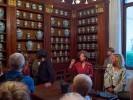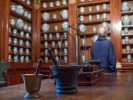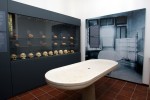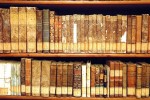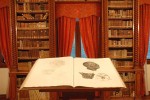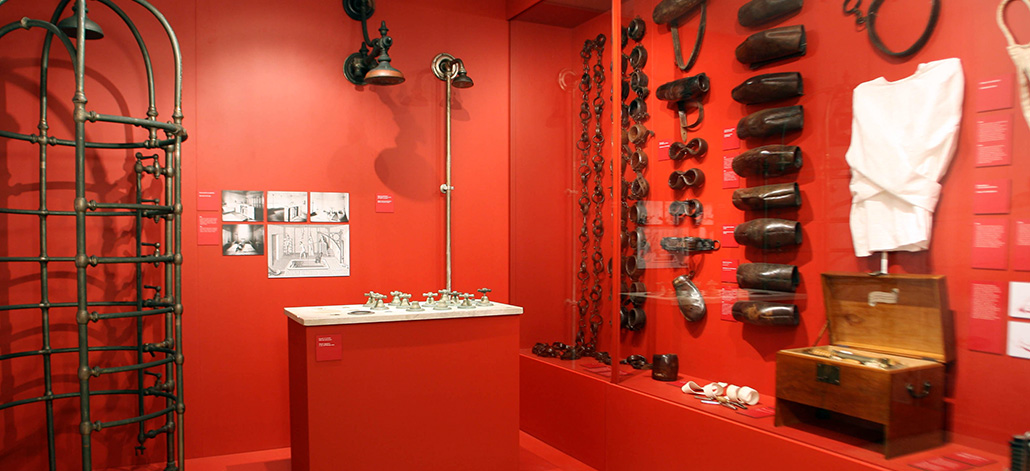

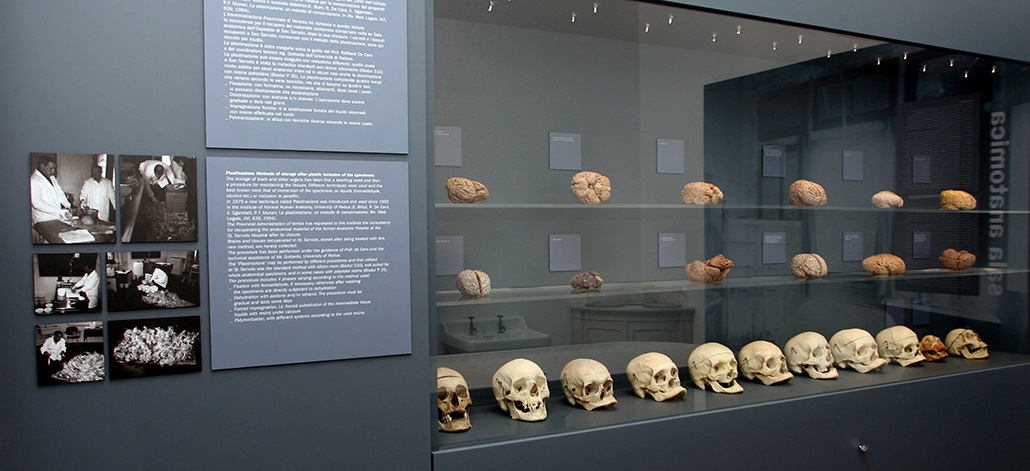
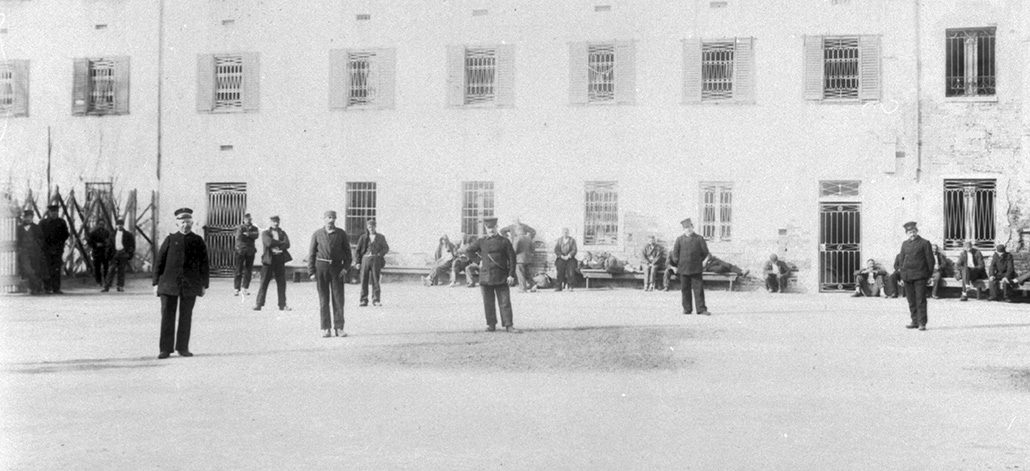
the museum

the museum
The “Insane Asylum Museum of San Servolo – Madness Locked Away” was inaugurated on 20 May 2006, and houses items from the psychiatric hospital, an institution that marked the history of the island from the early 1700s to 1978. The Museum’s scientific aspects were curated by professors Diego Fontanari and Mario Galzigna, while the exhibition was set up by architect Barbara Accordi.
The Museum’s purpose, already implicit in its name (Madness Locked Away), is to highlight the marginalising and segregating aspect of the mental hospital through specific exhibits, descriptions and explanatory panels.
The Museum is a place to read, discover and learn about the painful ties that bound the community to this part of its territory.
The Museum presents documents (copies of medical files, registers, prints and photographs) providing a brief introduction to the hospital’s history, restraining devices (handcuffs, shackles, sleeves, etc.), showers for hydrotherapy, patient handicrafts (paintings, objects, etc.), a piano indicating the beginnings of music therapy, and various scientific and clinical instruments (microscopes, electroshock devices, etc.). A number of photographs are displayed showing daily life in the hospital, as well as a section of photographs of patients before and after their stay at San Servolo.

the old apothecary
The Museum includes an 18th-century apothecary with original solid walnut shelves presenting an extraordinary collection of apothecary jars. There are over 200 jars of various shapes and sizes, almost all with their lid, marked with the image of the lion of Saint Mark in yellow above the scroll, given to the hospital by the Venetian Republic in recognition of the excellent work of the apothecary monks, and about 30 other small white jars.
In addition to the work bench, there are a few bronze, tin and stone mortars, one of which is mounted on a wooden pedestal dating from 1815, and a pair of weigh scales.
This collection of items provides a rare glimpse at an 18th-century hospital apothecary.

the anatomical room
Completing the museum display is a reconstruction of an anatomical room with a collection of 11 skulls and 12 brains, all pathological, preserved using the plastination method by Professor Raffaele De Caro at the Anatomical and Human Physiology Department of the University of Padua.
The original anatomical table and instruments date from the late 19th century, as do the jars used to preserve human brains in special solutions.
Psychiatry was marked by general medicine during the second half of the 19th century and the first decades of the 20th, giving increasing importance to the research and study of organic causes of mental illnesses. This can be justified by the contemporary observations of various mental disorders in well-known diseases like syphilis, alcoholism and in nutritional deficiencies like pellagra.

the library
The book heritage stored at San Servolo is composed of the book collections of the former psychiatric hospitals at San Servolo and San Clemente: most of the older materials are primarily of a religious and moral nature (1500 – 1700), while the new ones are medical and scientific (1800 – 1900).
The library is organised according to their original collections: San Servolo, San Clemente and Fatebenefratelli; the collections include monographs and periodicals, mostly in Italian, French, German and English.
The “San Clemente” and “Fatebenefratelli” collections are located on the ground floor of the library by the entrance from the island near the monumental area. The wooden bookcases were restored in the 1980s and extend along all four walls, with a balcony accessible via an internal staircase. The “San Servolo” collection is kept in the original wooden bookcases with open shelving, located upstairs in the former Medical Department of the hospital.
The collections are composed of:
“San Clemente” includes 636 volumes, from the 18th century to 1980, and 171 different periodicals, from the 19th century to 1980, primarily of a medical and scientific nature.
“Fatebenefratelli” includes 700 works, almost all from the 18th century, primarily of a moral, religious and philosophical nature.
“San Servolo” includes over 8 000 volumes with a wide variety of periodicals and monographs : religious, historic, philosophical, scientific and medical. There are also 11 large volumes of anatomical plates.
There is a paper card catalogue for the “San Servolo” collection, and a computerised inventory providing the author, title, publication date and location.








